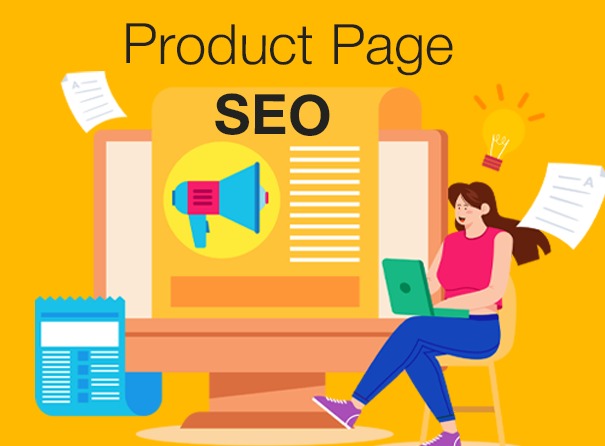TL;DR: -Product Page SEO is a game changer for ecommerce brands that want to rank higher and increase conversions. Effective eCommerce product page optimization involves using long-tail keywords in titles, descriptions, headers, and alt text. It also requires writing unique, benefit-focused copy, compressing images for faster load times, and using structured data like product and review schema. Other important SEO best practices include linking to related collections or blogs, updating out-of-stock pages with redirects or alternatives, and ensuring a mobile-first, fast-loading
E-commerce brands are always competing for visibility and sales. The product page is where this competition can be won or lost. Simply listing products online no longer guarantees traffic or sales. To attract serious shoppers and secure a good position on search engines, your product pages need to be well optimised. This is where Product Page SEO becomes important. It’s a crucial yet often neglected strategy that affects your search rankings and sales rates. A Semrush-based analysis shows that approximately one-third of ecommerce traffic (≈ 33%) comes from organic search. However, many product pages remain poorly optimised or neglected, signalling a major SEO opportunity at the SKU level.
Why Product Page SEO Matters
A product page is more than just specs and a price tag. It serves as a landing page, a sales pitch, and a key element for SEO. Without good SEO for product pages, even your best-selling items can get lost in search results. Google’s changing algorithm now favours rich, structured, and user-friendly content. This makes technical SEO and content optimisation essential. Moreover, optimised product pages lead to longer dwell times, lower bounce rates, and better conversion paths—factors that Google considers when boosting rankings. In short, a well-optimised product page not only attracts more visitors but also converts them into buyers.
Core Product Page SEO Best Practices
Successful ecommerce brands treat their product pages like high-performing landing pages. This means tailoring every SEO element, from metadata to internal linking, to improve visibility and usability. This approach helps Google understand your product better and reassures customers they are in the right place.
Following proven Product Page SEO Best Practices can increase organic traffic ,according to HubSpot’s latest ecommerce report.
Essential Product Page Optimization Techniques
- Meta Title & Description Optimization: - Every product page should start with a compelling meta title that includes the target keyword and brand, if relevant. Follow this with a click-worthy meta description that is concise, focused on benefits, and centered on user intent. Tip: Use long-tail keywords like "Product Page Meta Title Optimization" to target specific search queries.
- Structured Data for Product Listings: - Adding schema markup, such as Product, Review, and Offer schema, helps search engines understand the page better and display rich results. This not only boosts visibility but can also increase click-through rates, according to Google Search Central. We’ve discussed this in detail in our blog on Top 7 Local SEO Tools, where structured data plays a big role in local visibility.
- Image Optimization for Product Pages: - High-quality visuals are essential, but image SEO is often overlooked. Compress images for faster loading, name them with descriptive file names (for example, red-leather-sofa.jpg), and include alt text. Since 62.6% of all web searches on Google include image queries, image optimization is a high-impact tactic for ecommerce businesses looking to drive organic traffic.
- Keyword Placement & Content Depth: - Use the primary keyword ("Product Page SEO") and secondary phrases like "SEO for Product Pages" and "Ecommerce Product SEO" in strategic places such as headers, bullet points, and naturally throughout the product description. Include FAQs, reviews, and comparisons to provide more depth.
- Boosting Conversions Through SEO: - SEO isn’t just about ranking; it’s about earning trust and guiding action. Optimized product pages that feature clear calls-to-action, trust badges, easy navigation, and clean mobile layouts tend to convert better. If you combine this with fast loading speeds (aim for under 2.5 seconds) and mobile responsiveness, you create a page designed to rank and sell. Adobe's Digital Economy insights highlight that faster loading times, personalized recommendations, and optimized storefront experiences significantly contribute to better conversion outcomes, especially when load time is reduced to under two seconds.
Common Mistakes in Ecommerce Product SEO
- Using manufacturer-provided product descriptions without edits.
- Stuffing keywords.
- Missing internal links to relevant collections or blogs.
- Forgetting to update out-of-stock pages with redirects or alternative links.
- Skipping mobile-first design.
Avoiding these pitfalls can improve your SEO performance and your bottom line.
Your Product Pages Deserve Better SEO
SEO is a long-term effort, but for ecommerce, product pages are crucial. Whether you are optimizing 10 or 10,000 SKUs, every product page offers a chance to drive traffic, improve rankings, and increase revenue. Doing it right requires a thoughtful mix of technical SEO, content marketing, and user experience insights.
That’s where we come in. At Inqnest, our Search Engine Optimization Services are designed to help ecommerce brands scale— from keyword research and structured data to content strategies that convert.
Looking to transform your product pages into high-converting assets? Let’s talk.
FAQs: Product Page SEO
What is product page SEO?
Product page SEO is the process of optimizing individual ecommerce product pages to achieve higher rankings on search engines. It involves using relevant keywords, optimizing images and meta tags, improving load speed, and adding structured data.
How long should product descriptions be for SEO?
For effective ecommerce product page optimization, product descriptions should typically be between 300 and 500 words. This range provides enough space to include keywords, answer customer questions, and offer detailed information that boosts rankings and conversions.
Does schema markup help with product SEO?
Yes, schema markup such as Product, Review, and Offer schema improves how search engines understand your page and can trigger rich results, increasing both visibility and click-through rates in search.
What are the top mistakes in product page SEO?
Common product SEO mistakes include using duplicate content, stuffing keywords unnaturally, skipping mobile optimization, ignoring internal linking, and not adding schema markup or alt text for images.
How often should I update product pages for SEO?
You should review and update product pages every 3 to 6 months. Refresh content, update keywords based on search trends, add recent reviews, and ensure all links and stock information are accurate to maintain good SEO performance.











.png)








.jpg)



.png)
.png)
.png)

.png)
